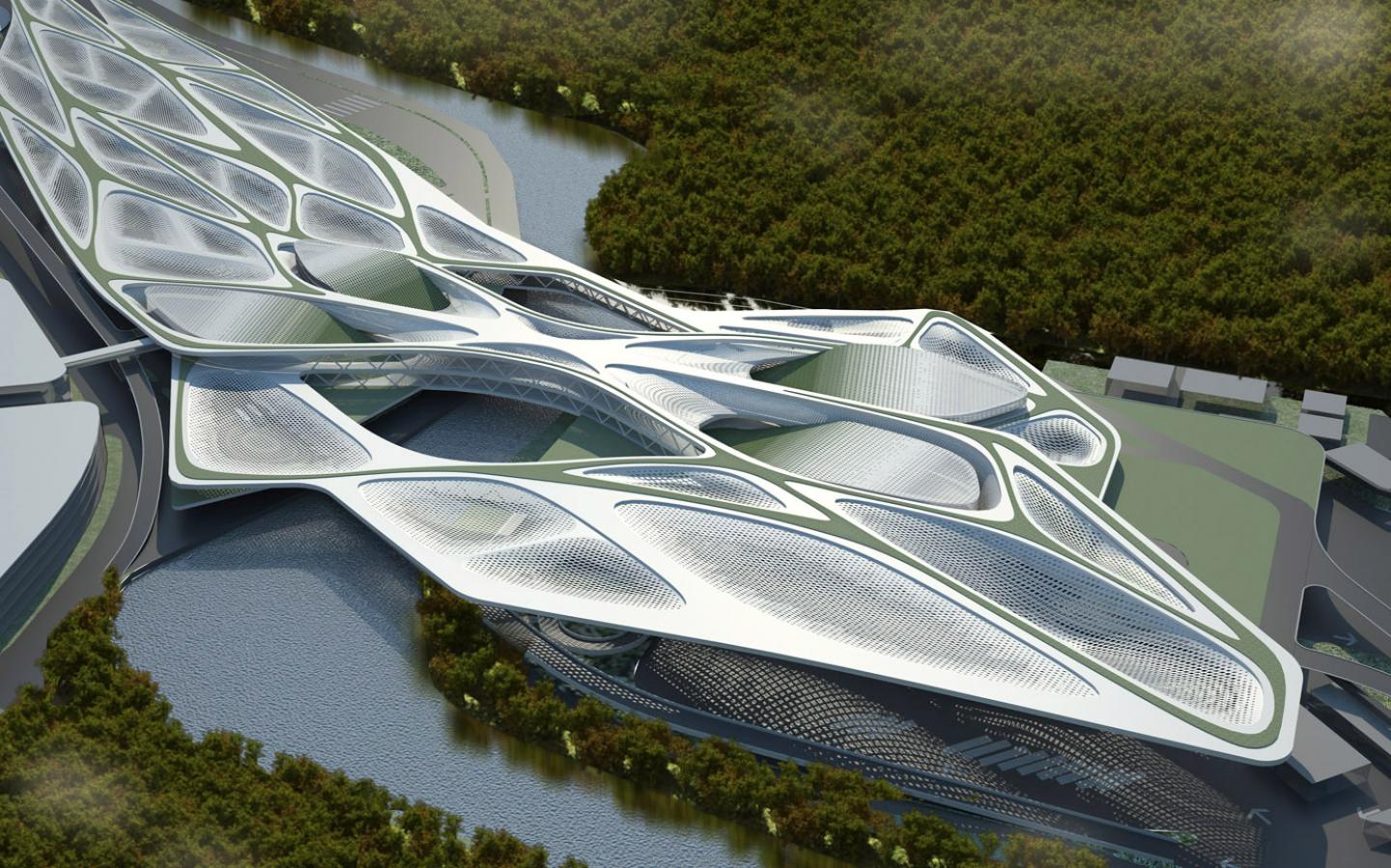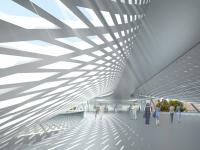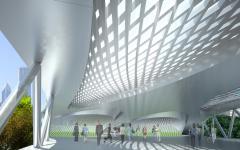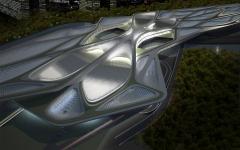Environment, humanity and architecture are not separate entities; they are interconnected and can even interact. In order to reduce car emission, co2 (carbon dioxide), therefore, a low carbon design is proposed.
This concept relied heavily on building - integrated, green innovation such as rooftop solar panels, and living slopes and greenery. The result is a design that not only borders on positive energy as a self-sufficient structure, but one that moves into a refreshing realm of natural architecture that can clean and replenish the surrounding air. The urban cityscape fulfills its energy needs by harnessing the solar (solar panels) while the cooling is controlled by natural ventilation.
In order to reduce the walking distance of the people, the Passenger Terminal Building is designed over the river. A network pattern is proposed. It forms a new way of arrangement of the space, which is based on the people flow analysis of the Passenger Terminal Building.
Several passenger paths are proposed on each side of the Passenger Terminal Building. The fan-shaped design not only widens the entrances area and waiting area inside the building, but also increases the amount of light into the facades. Together with the roof top greenery system, the process for the passengers would be more enjoyable.
Aesthetically, the network shape sprouts from the ground, branches, multiplies, and envelopes the building. This aesthetic network creates an interesting play on light and shadow. The roof will generate enough energy to power the building. This design allows for varying degrees of apertures which punctuate views from the interior and reveal the cityscape outside. Further, the roof network patterns structure harvests rainwater for use in the building and accumulates rainwater to irrigate the planting. The interior is absolutely flooded with natural light, too.
2011
Junkai Jian + Jinqi Huang
Favorited 1 times






